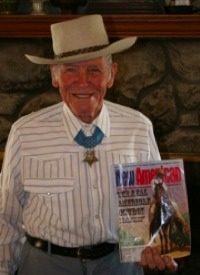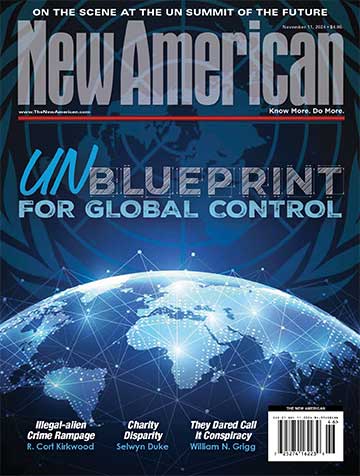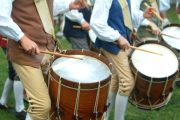
John Finn was the last surviving recipient of the Medal of Honor awarded for heroism during the Japanese attack on Pearl Harbor on December 7, 1941.
His official Medal of Honor citation (as printed in the official publication “Medal of Honor, 1861-1949, The Navy”, page 183) reads:
For extraordinary heroism, distinguished service, and devotion above and beyond the call of duty. During the first attack by Japanese airplanes on the Naval Air Station, Kanoehe Bay, on 7 December 1941, Lieutenant Finn promptly secured and manned a 50-caliber machine gun mounted on an instruction stand in a completely exposed section of the parking ramp, which was under heavy enemy machine-gun strafing fire. Although painfully wounded many times, he continued to man this gun and to return the enemy’s fire vigorously and with telling effect throughout the enemy strafing and bombing attacks and with complete disregard for his own personal safety. It was only by specific orders that he was persuaded to leave his post to seek medical attention. Following first-aid treatment, although obviously suffering much pain and moving with great difficulty, he returned to the squadron area and actively supervised the rearming of returning planes. His extraordinary heroism and conduct in this action were in keeping with the highest traditions of the United States Naval Service.
That brief description barely begins to tell the story of John Finn’s valiant actions. A fuller description can be seen at this tribute page.
{modulepos inner_text_ad}
Finn’s heroic exploits that day were later immortalized in the 1970 war film classic, Tora! Tora! Tora! Over the decades, he traveled to many military bases, service academies, and aircraft carriers to speak to the troops. He was usually mobbed by people who wanted to shake his hand, get his autograph, or have their pictures taken with him. He was no glory hog, but he was always accommodating. He was no pampered Hollywood celebrity; he was the real thing. As he got older, the travel became more difficult and tiring, but he continued to do it out of a sense of duty. “It means a lot to these young men,” he said, “And I get a lot back from them.”
I was not a close friend of John Finn and cannot claim to have known him well, but he had a way of making one feel at home, as if you were a member of the family. I had interviewed him several times by telephone during the 1970s and 80s, and he was always a delight to talk to. However, as it got into the late 1990s I decided that if I didn’t go visit him in person soon, I might lose the opportunity forever. I made the trek to his ranch three times to visit, take photographs, and interview him on video. On my last visit, in February of 2006, Mr. Finn was nearly 97 years old, but still clear of mind and still chopping his own firewood, which he burned in the large stone fireplace in his living room.
He loved to show off and tinker with the cars, trucks, motorcycles, and other motorized equipment that were “parked” all about his yard. His real passion, though, was firearms. “I’ve loved guns since I was a little boy, and I’ve been collecting them all my life,” he told me. He had collected several hundred of them, many of which were stored in large gun safes in the house, others that were stacked here and there throughout the home. He also had collected a veritable museum of ammunition — mostly for handguns and rifles — from many different eras and countries, and in various shapes, sizes, and calibers. On one of my trips, he had hundreds of cartridges spread across every table in the house to sort, categorize and record. “This one’s a beauty, made of wood” he said, holding up a wooden bullet. “They’ve been made out of just about anything you can imagine. People send them to me from all over the world.”
He also held up a copy of The New American magazine that had recently arrived and was setting on his easy chair near the fireplace. “This is a great magazine you put out,” he said, “I’ve been taking it for years.” Then he joked: “It looks like you got a picture of me on the cover from my younger days.” Sure enough, the cover story of that particular issue, “The Real American Cowboy,” featured a picture of a cowboy in a Stetson and white shirt that seemed the spittin’ image of the man standing before me (minus a few decades). Now that was too providential an opportunity to pass up. It did not take any coaxing from me; he was more than happy to pose with the magazine. But first, I asked, would he mind putting on the Medal of Honor for the photo? No problem, he gamely replied, and we soon had him ready for the picture you see here. I think it captures well his famous feisty spirit.
On June 27, 2009, more than 2,000 well-wishers came to Pine Valley to celebrate John’s 100th birthday. John arrived at the festive event, appropriately, in an Army Jeep — no stretch limo for him. The San Diego Union-Tribune carried a nice story, “Going Great Guns at 100,” on the event, along with photos, including a photo of Finn with Vietnam War Medal of Honor recipient John Baca.
Not all in attendance had come because of his Medal of Honor fame. Many came because they knew him as a fine human being, a good neighbor who was always willing to lend a helping hand to those in need. As the San Diego Union-Tribune article points out, he and Alice were foster parents to several Indian children of the Campo Indian Tribe, and they were well known for their assistance to other tribal members. In return, they had been, in effect, adopted by the tribe.
Trio of Heroes
John Finn was great friends with many of the other members of that very select company that have received our nation’s highest military honor. Among the Medal of Honor recipients who were closest to him — both in the geographic and personal sense — were Col. Lewis Millet and Col. Mitchell Paige. Since the three all lived in southern California, they frequently attended the same local events and traveled together to more distant events. Col. Millett, a Ranger Hall of Fame member, received the Medal of Honor for heroic actions in leading one of the U.S. Army’s most famous bayonet charges, during the Korean War. Col. Paige, the “hero of Guadalcanal,” would later become the model for the original “G.I. Joe action figure” produced by the Hasbro toy company.
The three men enjoyed each other’s company and kept in touch. In addition to their military experience, love of country, and commitment to duty, they shared another common bond: They were members of The John Birch Society. I met Col. Millett back in 1975 when he was on speaking tour for the Society. He was a colorful character, with a waxed handlebar mustache, a commanding presence, and a gift for storytelling. I did not meet Paige and Finn until years later, though I had talked with them a number of times by telephone.
We published a profile of these three then-living heroes, entitled “Men of Honor” in the October 3, 2003 issue of The New American. Colonel Paige died shortly after that tribute appeared, at age 85, on November 15, 2003. Colonel Millett died on November 14, 2009, at the age of 88. John William Finn passed away on May 27, 2010. He is buried with his wife Alice at the Campo Reservation cemetery near his ranch. He was blessed with a long and productive life, and he, in turn, blessed many others. As with all the great patriots of the past whose solemn company he now keeps, he will be sorely missed.
Related articles:
Family and friends bid farewell to John Finn
John Finn, Medal of Honor Recipient, Dies at 100
Pearl Harbor: Hawaii Was Surprised; FDR Was Not
Pearl Harbor: Scapegoating Kimmel and Short



